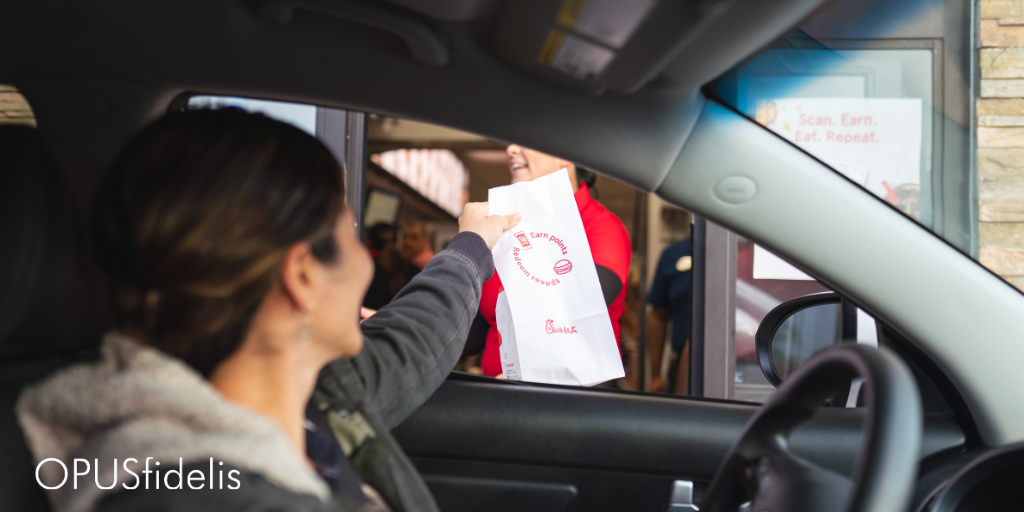As busy customers seek streamlined order processes, Chick-fil-A has updated its app to offer precise wait time estimates and accelerate production using geofencing technology.
Chick-fil-A geofencing: How it works
With mobile ordering on the rise in recent years, geofencing has gained popularity in the food industry for improving efficiency – but how does it work? In the Chick-fil-A mobile app, once customers enable location services, geofencing tech can track when they are close to a selected restaurant. This allows the restaurants to start preparing orders and provide estimated wait times for both curbside pickup and sit-down service.
If pilot-stage data is any indicator, the app updates are promising. After piloting the geofencing technology at 100 stores throughout the country, Chick-fil-A succeeded in producing wait time estimates with 90% accuracy and reducing customer wait times by one to two minutes.
Given Chick-fil-A’s previous performance in drive-through service, the updates could provide much-needed improvements for the chain. While other QSR (quick service restaurant) competitors have drive-through wait times averaging around five minutes, Chick-fil-A’s average wait time is just under eight and a half minutes! It’s important to note, however, that Chick-fil-A’s higher customer volume is also a factor here, but the app updates are a welcome service accelerator regardless.
Morgan Anderer, Chick-fil-A’s Senior Project Lead on the Customer Digital Experience Team, recently shared about how the app updates help the company fulfill its mission:
“By timing a customer’s arrival with their order, we can ensure they get a fresh meal and served quickly. We don’t believe our customers should have to compromise, and these new features truly balance what our restaurants do best: exceptional quality and efficient service.”
The future of geofencing as demand for takeout increases
Since 2020, takeout has taken off, with over 65% of adults indicating an increased likeliness to get food to-go – and industry experts say that number is set to increase. Marketing Dive has related:
“According to the National Restaurant Association’s State of the Industry 2023 report… some 39% of QSR [quick service restaurant] operators expect curbside service to become more prevalent in 2023… and 15% of consumers would most like to see technology that offers more convenient takeout and delivery options.”
As demand for takeout remains high, geofencing can aid restaurants not only in accelerating service speed but by providing a more personalized experience through collecting more detailed data about customer habits.


